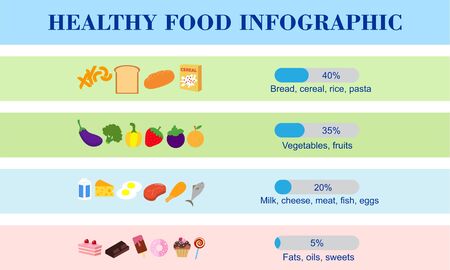Understanding the Difference: Food Allergies vs. Food Intolerances
As parents, we all want to keep our little ones safe and healthy, especially when it comes to what they eat. Recognizing the difference between food allergies and food intolerances in infants is an important first step in making the best choices for your child’s well-being. While these two conditions might seem similar at first glance, their underlying causes, symptoms, and potential risks are quite different.
Food allergies are immune system reactions that happen when your baby’s body mistakenly identifies a harmless food as a threat. This can trigger symptoms that range from mild hives to serious, life-threatening reactions like anaphylaxis. On the other hand, food intolerances don’t involve the immune system at all. Instead, they usually happen because your baby’s digestive system has trouble breaking down certain foods—like lactose in milk—which can lead to discomfort such as gas, bloating, or tummy aches.
Understanding these key differences helps you respond appropriately if your infant shows signs of discomfort after eating. Food allergies require immediate medical attention due to the risk of severe reactions, while intolerances are generally less dangerous but still important to address for your baby’s comfort and nutrition. By learning about both conditions, you’re taking a loving step toward supporting your child’s unique needs.
2. Common Signs and Symptoms in Babies
Understanding the difference between food allergies and food intolerances in infants starts with recognizing the signs and symptoms they may show. While these reactions can sometimes look similar, knowing what to watch for can help parents respond quickly and appropriately.
Typical Reactions: What to Look For
Both food allergies and intolerances can cause a range of responses in babies, but the underlying reasons are different. Allergies are immune system responses, while intolerances generally involve digestive difficulties. Below is a helpful comparison of common symptoms:
| Reaction Type | Skin Changes | Digestive Troubles | Respiratory Symptoms |
|---|---|---|---|
| Food Allergy | Hives, swelling (often lips, face, or eyes), eczema flare-ups | Vomiting, diarrhea, abdominal pain (less common) | Runny nose, sneezing, coughing, wheezing, trouble breathing (in severe cases) |
| Food Intolerance | Rarely causes skin changes | Bloating, gas, diarrhea, stomach cramps | Rarely causes respiratory symptoms |
Spotting the Differences at Home
If your baby develops red patches or hives soon after eating a new food—or if you notice swelling around their mouth or eyes—this could signal an allergic reaction. Digestive issues like bloating or frequent loose stools without any other symptoms often point toward a food intolerance. It’s important to remember that allergies can also include more serious symptoms such as difficulty breathing or persistent vomiting, which require immediate medical attention.
A Gentle Reminder for Parents
No two babies are exactly alike; some may have very mild symptoms while others react more strongly. If you’re ever unsure whether your baby’s reaction is an allergy or an intolerance, keeping a detailed food diary and talking with your pediatrician is always a wise step. Your gentle observation and prompt action make all the difference as you navigate this journey together.

3. Foods Most Commonly Involved
When it comes to identifying food allergies and intolerances in infants, it’s important for American parents to be aware of the foods that are most often responsible for causing reactions. Some foods are more likely to trigger symptoms, whether due to an allergy or intolerance, especially during a baby’s first year as they begin trying new flavors and textures.
Cow’s Milk
Cow’s milk is one of the leading causes of both allergies and intolerances in infants across the United States. While some little ones may simply have trouble digesting lactose (the sugar found in milk), others can experience a true allergic reaction to the proteins in cow’s milk. Signs can range from tummy troubles like gas and diarrhea to more serious issues such as hives or difficulty breathing. Since many infant formulas contain cow’s milk protein, recognizing these symptoms early is key to keeping your child comfortable and safe.
Eggs
Eggs are another common allergen introduced during infancy. Egg allergies usually involve reactions to the proteins found in egg whites, but sometimes yolks can also cause problems. Symptoms might include skin rashes, digestive upset, or even respiratory symptoms. It’s a good idea for parents to introduce eggs slowly and watch for any changes—always having open communication with your pediatrician if something seems off.
Peanuts
Peanut allergies have become increasingly prevalent among American children and tend to cause more severe reactions than some other foods. Even tiny amounts can trigger symptoms ranging from mild itching or swelling to life-threatening anaphylaxis. Because of this, experts now recommend introducing peanut-containing foods early (around 4-6 months) for most babies at risk—but always under the guidance of your healthcare provider. This careful approach helps families recognize potential issues while giving infants the best chance at developing tolerance.
Other Noteworthy Foods
While cow’s milk, eggs, and peanuts top the list, other foods like soy, wheat, tree nuts, fish, and shellfish can also cause allergic reactions or intolerances in infants. Each child is unique, so it’s essential to observe closely when new foods are introduced and seek guidance if you’re ever unsure about a reaction.
Gentle Guidance for Parents
Navigating your baby’s introduction to solid foods is an exciting milestone filled with discovery—for both parent and child. Remember that you’re not alone; your pediatrician is there to support you every step of the way. By staying informed about the most common culprits and watching for signs of discomfort or reactions, you can help ensure your little one explores new tastes safely and joyfully.
4. When to Call Your Pediatrician
As parents, it’s natural to feel a little anxious when your baby experiences unusual symptoms after eating. While many food reactions are mild, some signs require immediate attention from your pediatrician. Recognizing these warning signals early can make a significant difference in keeping your infant safe and healthy.
Recognizing Warning Signs
Certain symptoms may indicate a serious allergic reaction or intolerance that needs prompt medical care. If you notice any of the following signs in your baby, don’t hesitate to contact your pediatrician:
| Warning Sign | Possible Meaning | Recommended Action |
|---|---|---|
| Difficulty breathing, wheezing, or persistent coughing | Severe allergy (anaphylaxis) | Call 911 or go to the ER immediately |
| Swelling of the lips, face, tongue, or throat | Severe allergy (anaphylaxis) | Call 911 or go to the ER immediately |
| Hives or widespread rash | Allergic reaction | Contact your pediatrician promptly |
| Persistent vomiting or diarrhea after eating specific foods | Food intolerance or allergy | Contact your pediatrician for advice |
| Lethargy or unresponsiveness | Severe reaction/illness | Seek immediate medical attention |
| Blood in stool (especially with other symptoms) | Possible allergy or intolerance (e.g., cows milk protein allergy) | Contact your pediatrician promptly |
Communicating with Healthcare Providers
If you need to reach out to your pediatrician, being prepared can help you get the best advice for your child. Here are some tips for effective communication:
- Keep a symptom diary: Note down what your baby ate, the time symptoms started, and what those symptoms were.
- Mention family history: Let your provider know if there are known allergies in close relatives.
- Describe changes clearly: Share any changes in feeding habits, mood, or physical appearance.
- Ask questions: Don’t hesitate to ask about next steps for testing, treatment options, and dietary adjustments.
- If in doubt, reach out: Trust your instincts—if something feels off, it’s always okay to call.
Your pediatrician is your partner in caring for your little one. Open communication and timely action can offer both reassurance and support as you navigate food allergies and intolerances together.
5. How to Keep Mealtime Safe and Enjoyable
Mealtimes with your little one are not just about nutrition—they’re also special moments for bonding and discovery. If you’re navigating the world of food allergies or intolerances, it’s completely natural to feel a bit anxious when introducing new foods. With a few thoughtful steps, you can keep mealtime both safe and joyful for everyone at the table.
Start Slow and Steady
When introducing new foods, especially those that are common allergens like peanuts, eggs, or dairy, go slowly. Offer just one new food at a time and wait three to five days before adding another. This gentle pace allows you to watch for any reactions while giving your baby time to adjust to new flavors and textures.
Create a Calm Environment
Babies pick up on our moods, so try to keep mealtimes relaxed and pressure-free. Sit together at the table, talk softly, and let your baby explore their food with their hands as well as their mouth. If something spills or gets messy, remember—learning is happening! Your warm presence reassures your baby that trying new things is safe and fun.
Watch Closely but Don’t Worry Excessively
Keep an eye out for signs of allergies or intolerances, such as rashes, vomiting, diarrhea, or fussiness. If you notice anything unusual, jot it down along with what your child ate so you can share this information with your pediatrician. However, most babies tolerate new foods just fine—so take a deep breath and enjoy these milestones together.
Empower Yourself with Knowledge
If food allergies run in your family or if your baby has already shown some sensitivities, consult with your pediatrician before introducing high-risk foods. They may recommend starting certain foods earlier or under medical supervision. Remember: You’re not alone on this journey—your healthcare team is there to support you every step of the way.
Celebrate Each Step
No matter how small the progress—from tasting a new fruit to simply sitting happily at the table—celebrate these moments together. Building a positive relationship with food now lays the foundation for healthy eating habits in the years ahead. With patience, love, and a dash of curiosity, mealtimes can become cherished memories full of learning and laughter.
6. Building Support: Resources and Community
When navigating the challenges of food allergies and intolerances in infants, no parent should feel alone. Finding reliable information and connecting with others who understand your journey can make a world of difference. In the United States, there are numerous trusted organizations and community groups dedicated to supporting families like yours.
Trusted National Resources
The Food Allergy Research & Education (FARE) organization is a leading authority, offering up-to-date information on managing food allergies in children. The Centers for Disease Control and Prevention (CDC) also provides clear guidelines and educational materials about food allergies in early childhood settings. For general medical guidance, the American Academy of Pediatrics (AAP) is an excellent resource for parents seeking advice from pediatric experts.
Community Groups for Emotional Support
Connecting with other parents facing similar experiences can be incredibly reassuring. Organizations like Kids With Food Allergies offer supportive online forums and local meet-ups, where families share stories, recipes, and encouragement. Many cities have Facebook groups or neighborhood parent networks focused on food allergies and intolerances—these can be invaluable for asking questions, finding recommendations, and just knowing you’re not alone.
Practical Tips for Finding Support
- Ask your pediatrician if they know of any local support groups or workshops.
- Search social media using hashtags like #FoodAllergyMom or #AllergyParent to find active communities.
- Check with your child’s daycare or preschool—they often have resources or connections with families facing similar challenges.
You’re Not Alone
Remember, every family’s experience is unique, but so many parents are walking this path alongside you. Reaching out for information and emotional support is a sign of strength—and it can make all the difference as you advocate for your little one’s health and happiness.

